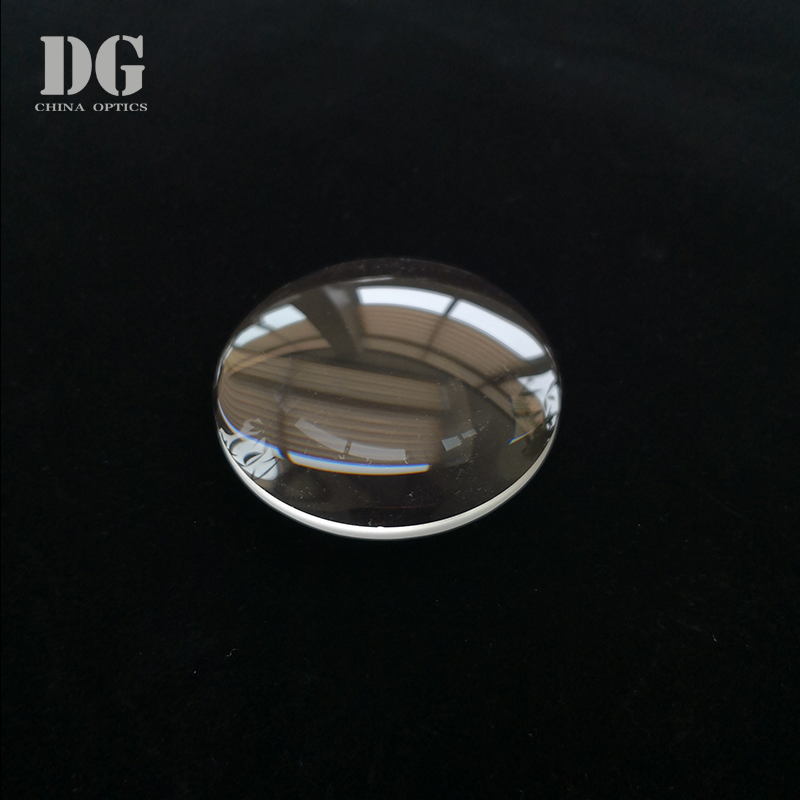Hot New Products Laser Lens - fused silica /Sapphire glass lens for high precision laser optics – DG
Hot New Products Laser Lens - fused silica /Sapphire glass lens for high precision laser optics – DG Detail:
Optical Windows

An achromatic lens or achromat is a lens that is designed to limit the effects of chromatic and spherical aberration. Achromatic lenses are corrected to bring two wavelengths (typically red and blue) into focus on the same plane.
The most common type of achromat is the achromatic doublet, which is composed of two individual lenses made from glasses with different amounts of dispersion. Typically, one element is a negative (concave) element made out of flint glass such as F2, which has relatively high dispersion, and the other is a positive (convex) element made of crown glass such as BK7, which has lower dispersion. The lens elements are mounted next to each other, often cemented together, and shaped so that the chromatic aberration of one is counterbalanced by that of the other.
In the most common type (shown), the positive power of the crown lens element is not quite equaled by the negative power of the flint lens element. Together they form a weak positive lens that will bring two different wavelengths of light to a common focus. Negative doublets, in which the negative-power element predominates, are also made.
DG’s achromatic lenses cover the 240 – 410 nm, 400 – 700 nm, 650 – 1050 nm, 1050 – 1620 nm, 3 – 5 µm, and 8 – 12 µm wavelength ranges. We offer achromatic doublets, cylindrical achromatic doublets, and air-spaced achromatic doublets, as well as achromatic triplets that allow for maximum aberration control.
If you do not have the designs or drawings for the required achromatic lenses, DG’s engineers can help you to make some. Please contact DG by phone or email for drawings and Zemax files.
Achromatic lenses are ideal for a range of applications including fluorescence microscopy, image relay, inspection, and spectroscopy and widely used in a multi-lens optical system that usually consists of several achromatic lenses.
Specifications

Types

Types

Product detail pictures:





Related Product Guide:
With our excellent administration, strong technical capability and strict excellent control method, we carry on to offer our clients with responsible good quality, reasonable costs and great companies. We intention at becoming considered one of your most responsible partners and earning your pleasure for Hot New Products Laser Lens - fused silica /Sapphire glass lens for high precision laser optics – DG , The product will supply to all over the world, such as: Madrid, Curacao, San Diego, During in 11 years,We have participated in more than 20 exhibitions,obtains the highest praise from each customer. Our company always aim to provide the customer best products with lowest price. We are making great efforts to achieve this win-win situation and sincerely welcome you to join us. Join us, show your beauty. We will always be your first choice. Trust us, you will never lose heart.
Reasonable price, good attitude of consultation, finally we achieve a win-win situation,a happy cooperation!




